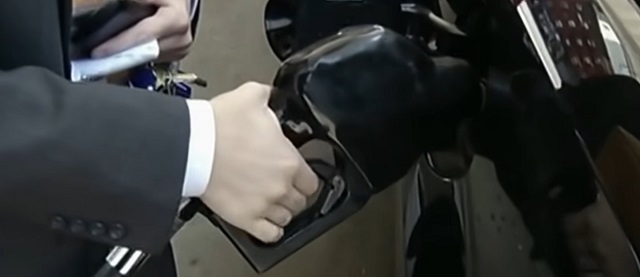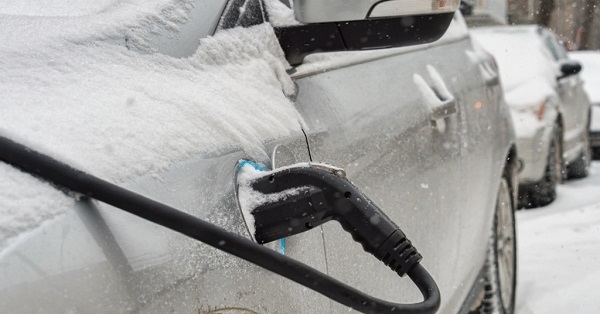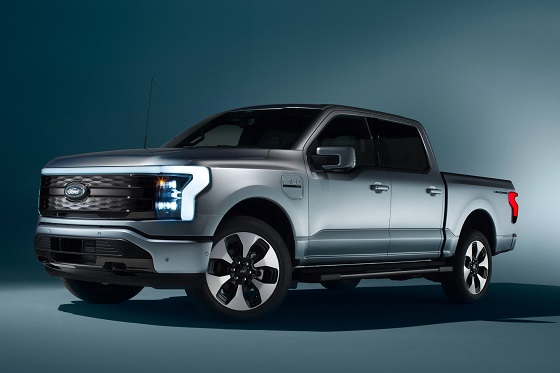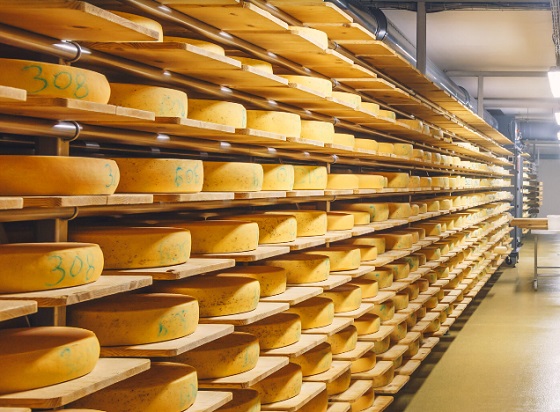Automotive
‘Save Our Cars’ Is A Winning Campaign Message In An Age Of EV Mandates

 From the Daily Caller News Foundation
From the Daily Caller News Foundation
By KEVIN MOONEY
Automobile consumers who treasure the open roads during the summertime could upend the presidential campaign and U.S. Senate races in surprising places if public opposition to electric-vehicle mandates and other regulations continues to rise.
That is what some recent polls suggest and it certainly helps to explain why the Biden administration is poised to artificially reduce fuel prices by selling one million barrels of gasoline from an energy reserve in New England timed with the summer driving season and in anticipation of the November elections.
Since the East Coast consumed in excess of three million barrels a day of gasoline last June, it is not evident that having an additional one million barrels on the market will make an appreciable difference.
Moreover, there is an argument to be made that by tapping into the reserve Team Biden is leaving the region open to cyberattacks that would disrupt energy supplies. (Recall, that is precisely what happened throughout the southeast in 2021 when a ransomware attack hit the Colonial Pipeline.)
But even in the absence of any cyber drama, the cumulative effect of President Joe Biden’s anti-energy agenda is already registering with consumers who benefit from affordable, reliable energy. This is particularly true where conventional, gas-powered cars are concerned.
On holiday weekends, cars erase differences, bring families together and improve the quality of life. The American Automobile Association (AAA) predicts almost 50 million people will travel 50 miles or more from their homes to celebrate Independence Day over the weekend of June 30 to July 4.
This would represent an increase of 3.7% from 2021 bringing travel volumes to where they were prior to the COVID-19 pandemic in 2019. This increase will be particularly acute with AAA expecting 42 million Americans to hit the roads this coming Independence Day.
But what about those EV mandates?
President Biden and California Gov. Gavin Newsom, a fellow Democrat, remain undeterred by the paucity of charging stations, the limited range of EV’s, their exorbitant costs, and the vulnerability of foreign supply chains leading back to China as they press ahead with new regulatory initiatives. Biden’s Environmental Protection Agency finalized a tailpipe emissions rule in March aimed at coercing automakers into selling more EVs while the California Air Resources Board is pressing ahead with a “zero emissions” rule the board approved last year to meet Newsom’s stated climate goals.
California is clearly working hand in glove with the Biden administration to achieve zero emissions goals for vehicles by 2035. This effort will most certainly limit consumer choice and raise costs.
Despite all the subsidies and regulatory schemes developed to favor EV’s, they represent only about 1% of the 290 million vehicles in the U.S. today. Meanwhile EV costs continue to soar.
Recent studies also show that EVs, on average, are more expensive to own and operate than their gas-powered counterparts. So how should consumers respond to the regulatory onslaught?
Enter the “Save Our Cars Coalition,” which includes 31 national and state organizations devoted to preserving the ability of consumers to select the vehicles most suitable to their needs.
Tom Pyle, president of the Institute for Energy Research, a coalition member that favors free market energy policies, views cars as an integral component of American life. The Biden-Newsom regulations amount to what Pyle describes as “an assault on American freedom.”
“In a nation as expansive as the United States, cars are not merely vehicles, they are integral to the American way of life,” Pyle says. “They play a pivotal role in our daily lives, especially in suburban and rural settings. This modern-day prohibition would outlaw a product and a value–in this case, gasoline-powered cars and trucks that have created personal mobility on an unprecedented scale – that it cannot persuade people to forego themselves.”
The coalition is perfectly positioned to make EV mandates a campaign issue in areas where the affordability of cars capable of traversing long distances without frequent stops is very much on the minds of voters. State officials who continue to double-down on California-type regulations will only serve to bolster the coalition’s arguments.
By contrast, states that break free from California’s emissions standards could become surprisingly competitive in the presidential race. Virginia Gov. Glenn Youngkin, a Republican, recently announced that he would end California’s EV mandate in his state by the end of this year. Although Virginia hasn’t backed a Republican for president since George W. Bush was re-elected in 2004, polls show Biden and Donald Trump are in a dead heat. The former, and perhaps future Republican president, is on record opposing Biden’s EV mandates.
By contrast, Gov. Phil Murphy of New Jersey, a Democrat elected in 2017 and re-elected in 2021, is moving full speed ahead with a California-type mandate requiring all new car sales to be electric by 2035. Polls show Murphy’s Jersey constituents are not keen on the policy change. In fact, more than half of state residents say they are not inclined to buy an electric car even with the mandates.
New Jersey has not voted for a Republican presidential candidate since George Bush Sr. won the state in 1988. But fresh polls show Biden leading Trump by just seven points in the Garden State. It is worth noting that New Jersey has a large block of unaffiliated voters that can be pliable in tight races such as the most recent gubernatorial campaign.
Murphy almost lost his re-election bid to Republican Jack Ciattarelli, a former assemblyman and businessman, who came within a few percentage points of pulling off an upset. Trump’s campaign rally in Wildwood, N.J., that attracted more than 100,000 people could also serve as a barometer for a potentially close election. A beach resort community, Wildwood is practically inaccessible without the kind of vehicles Biden and Newsom are attempting to ban.
The big prize though may be Pennsylvania where Trump is leading Biden in recent polls. There is also a competitive U.S. Senate race in that state between Sen. Robert Casey Jr., the Democratic incumbent, and Dave McCormick, the Republican challenger.
Polls show Casey is only ahead by six points. So far, Casey has been ducking and avoiding any questions about his position on EV mandates. With Trump already leading, and McCormick gaining in the Keystone State, anyone running on a platform of “Save Our Cars” could have a field day.
Kevin Mooney is the Senior Investigative Reporter at the Commonwealth Foundation’s free-market think tank and writes for several national publications. Twitter: @KevinMooneyDC
Automotive
Canada’s EV gamble is starting to backfire

Things have only gone from bad to worse for the global Electric Vehicle industry. And that’s a problem for Canada, because successive Liberal governments have done everything in their power to hitch our cart to that horse.
Earlier this month, the Trump Administration rolled back more Biden-era regulations that effectively served as a back-door EV mandate in the United States. These rules mandated that all passenger cars be able to travel at least 65.1 miles (and for light trucks, 45.2 miles) per gallon of gasoline or diesel, by the year 2031. Since no Internal Combustion Engine (ICE) vehicle could realistically conform to those standards, that would have essentially boxed them out of the market.
Trump’s rolling them back was a fulfillment of his campaign promise to end the Biden Administration’s stealth EV mandates. But it was also a simple recognition of the reality that EVs can’t compete on their own merits.
For proof of that, look no further than our second bit of bad news for EVs: Ford Motor Company has just announced a massive $19.5 billion write-down, almost entirely linked to its aggressive push into EVs. They’ve lost $13 billion on EVs in the past two years alone.
The company invested tens of billions on these go-carts, and lost their shirt when it turned out the market for them was miniscule.
Ford’s EV division president Andrew Frick explained, “Ford is following the customer. We are looking at the market as it is today, not just as everyone predicted it to be five years ago.”
Of course, five years ago, the market was assuming that government subsidies-plus-mandates would create a market for EVs at scale, which hasn’t happened.
As to what this portends for the market, the Wall Street Journal argued, “The company’s pivot from all-electric vehicles is a fresh sign that America’s roadways – after a push to remake them – will continue to look in the near future much like they do today, with a large number of gas-powered cars and trucks and growing use of hybrids.”
And that’s not just true in the U.S. Across the Atlantic, reports suggest the European Union is preparing to delay their own EV mandates to 2040. And the U.K.’s Labour government is considering postponing their own 2030 ICE vehicle ban to align with any EU change in policy.
It’s looking like fewer people around the world will be forced by their governments to buy EVs. Which means that fewer people will be buying EVs.
Now, that is a headache for Canada. Our leaders, at both the federal and provincial levels, have bet big on the success of EVs, investing billions in taxpayer dollars in the hopes of making Canada a major player in the global EV supply chain.
To bolster those investments, Ottawa introduced its Electric Vehicle mandate, requiring 100 per cent of new light-duty vehicle sales to be electric by 2035. This, despite the fact that EVs remain significantly more expensive than gas-and-diesel driven vehicles, they’re poorly suited to Canada’s vast distances and cold climate, and our charging infrastructure is wholly inadequate for a total transition to EVs.
But even if these things weren’t true, there still aren’t enough of us to make the government’s investment make sense. Their entire strategy depends on exporting to foreign markets that are rapidly cooling on EVs.
Collapsing demand south of the border – where the vast majority of the autos we build are sent – means that Canadian EVs will be left without buyers. And postponed (perhaps eventually canceled) mandates in Europe mean that we will be left without a fallback market.
Canadian industry voices are growing louder in their concern. Meanwhile, plants are already idling, scaling back production, or even closing, leaving workers out in the cold.
As GM Canada’s president, Kristian Aquilina, said when announcing her company’s cancellation of the BrightDrop Electric delivery van, “Quite simply, we just have not seen demand for these vehicles climb to the levels that we initially anticipated…. It’s simply a demand and a market-driven response.”
Prime Minister Mark Carney, while sharing much of the same environmental outlook as his predecessor, has already been compelled by economic realities to make a small adjustment – delaying the enforcement of the 2026 EV sales quotas by one year.
But a one-year pause doesn’t solve the problem. It kicks the can down the road.
Mr. Carney must now make a choice. He can double down on this troubled policy, continuing to throw good money after bad, endangering a lot of jobs in our automotive sector, while making transportation more expensive and less reliable for Canadians. Or he can change course: scrap the mandates, end the subsidies, and start putting people and prosperity ahead of ideology.
Here’s hoping he chooses the latter.
The writing is on the wall. Around the world, the forced transition to EVs is crashing into economic reality. If Canada doesn’t wake up soon, we’ll be left holding the bag.
Automotive
Ford’s EV Fiasco Fallout Hits Hard


From the Daily Caller News Foundation
I’ve written frequently here in recent years about the financial fiasco that has hit Ford Motor Company and other big U.S. carmakers who made the fateful decision to go in whole hog in 2021 to feed at the federal subsidy trough wrought on the U.S. economy by the Joe Biden autopen presidency. It was crony capitalism writ large, federal rent seeking on the grandest scale in U.S. history, and only now are the chickens coming home to roost.
Ford announced on Monday that it will be forced to take $19.5 billion in special charges as its management team embarks on a corporate reorganization in a desperate attempt to unwind the financial carnage caused by its failed strategies and investments in the electric vehicles space since 2022.
Cancelled is the Ford F-150 Lightning, the full-size electric pickup that few could afford and fewer wanted to buy, along with planned introductions of a second pricey pickup and fully electric vans and commercial vehicles. Ford will apparently keep making its costly Mustang Mach-E EV while adjusting the car’s features and price to try to make it more competitive. There will be a shift to making more hybrid models and introducing new lines of cheaper EVs and what the company calls “extended range electric vehicles,” or EREVs, which attach a gas-fueled generator to recharge the EV batteries while the car is being driven.
Dear Readers:
As a nonprofit, we are dependent on the generosity of our readers.
Please consider making a small donation of any amount here.
Thank you!
“The $50k, $60k, $70k EVs just weren’t selling; We’re following customers to where the market is,” Farley said. “We’re going to build up our whole lineup of hybrids. It’s gonna be better for the company’s profitability, shareholders and a lot of new American jobs. These really expensive $70k electric trucks, as much as I love the product, they didn’t make sense. But an EREV that goes 700 miles on a tank of gas, for 90% of the time is all-electric, that EREV is a better solution for a Lightning than the current all-electric Lightning.”
It all makes sense to Mr. Farley, but one wonders how much longer the company’s investors will tolerate his presence atop the corporate management pyramid if the company’s financial fortunes don’t turn around fast.
To Ford’s and Farley’s credit, the company has, unlike some of its competitors (GM, for example), been quite transparent in publicly revealing the massive losses it has accumulated in its EV projects since 2022. The company has reported its EV enterprise as a separate business unit called Model-E on its financial filings, enabling everyone to witness its somewhat amazing escalating EV-related losses since 2022:
• 2022 – Net loss of $2.2 billion
• 2023 – Net loss of $4.7 billion
• 2024 – Net loss of $5.1 billion
Add in the company’s $3.6 billion in losses recorded across the first three quarters of 2025, and you arrive at a total of $15.6 billion net losses on EV-related projects and processes in less than four calendar years. Add to that the financial carnage detailed in Monday’s announcement and the damage from the company’s financial electric boogaloo escalates to well above $30 billion with Q4 2025’s damage still to be added to the total.
Ford and Farley have benefited from the fact that the company’s lineup of gas-and-diesel powered cars have remained strongly profitable, resulting in overall corporate profits each year despite the huge EV-related losses. It is also fair to point out that all car companies were under heavy pressure from the Biden government to either produce battery electric vehicles or be penalized by onerous federal regulations.
Now, with the Trump administration rescinding Biden’s harsh mandates and canceling the absurdly unattainable fleet mileage requirements, Ford and other companies will be free to make cars Americans actually want to buy. Better late than never, as they say, but the financial fallout from it all is likely just beginning to be made public.
- David Blackmon is an energy writer and consultant based in Texas. He spent 40 years in the oil and gas business, where he specialized in public policy and communications.
-

 Business1 day ago
Business1 day ago“Magnitude cannot be overstated”: Minnesota aid scam may reach $9 billion
-

 Haultain Research11 hours ago
Haultain Research11 hours agoSweden Fixed What Canada Won’t Even Name
-

 Business1 day ago
Business1 day agoLargest fraud in US history? Independent Journalist visits numerous daycare centres with no children, revealing massive scam
-

 Censorship Industrial Complex1 day ago
Censorship Industrial Complex1 day agoUS Under Secretary of State Slams UK and EU Over Online Speech Regulation, Announces Release of Files on Past Censorship Efforts
-

 Business11 hours ago
Business11 hours agoWhat Do Loyalty Rewards Programs Cost Us?








